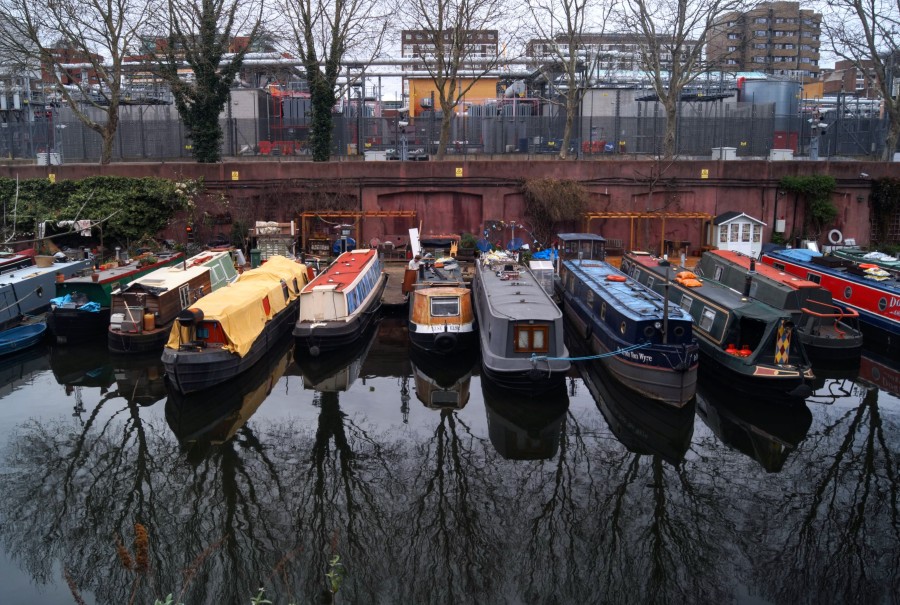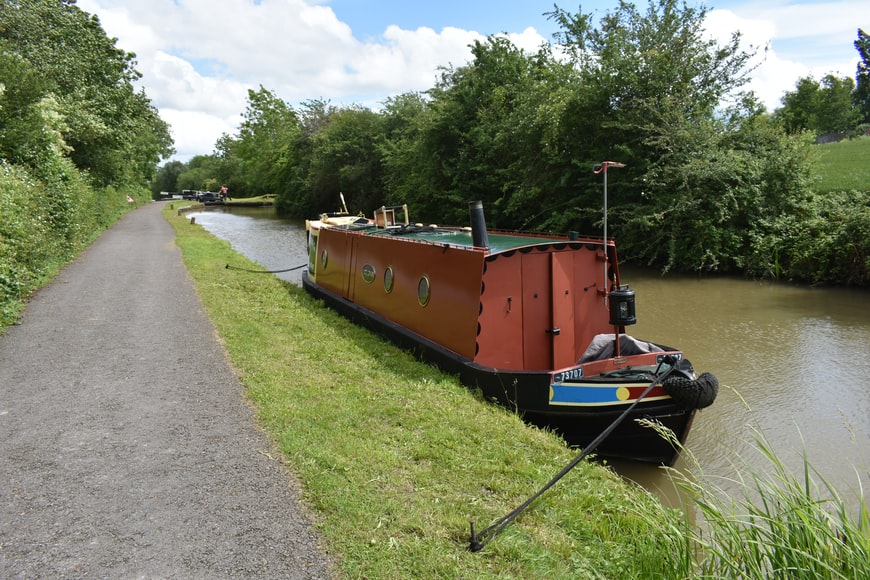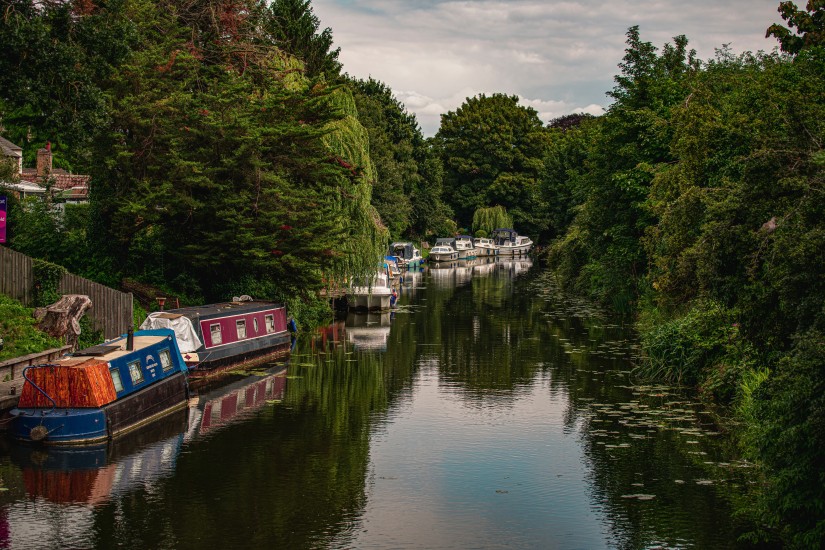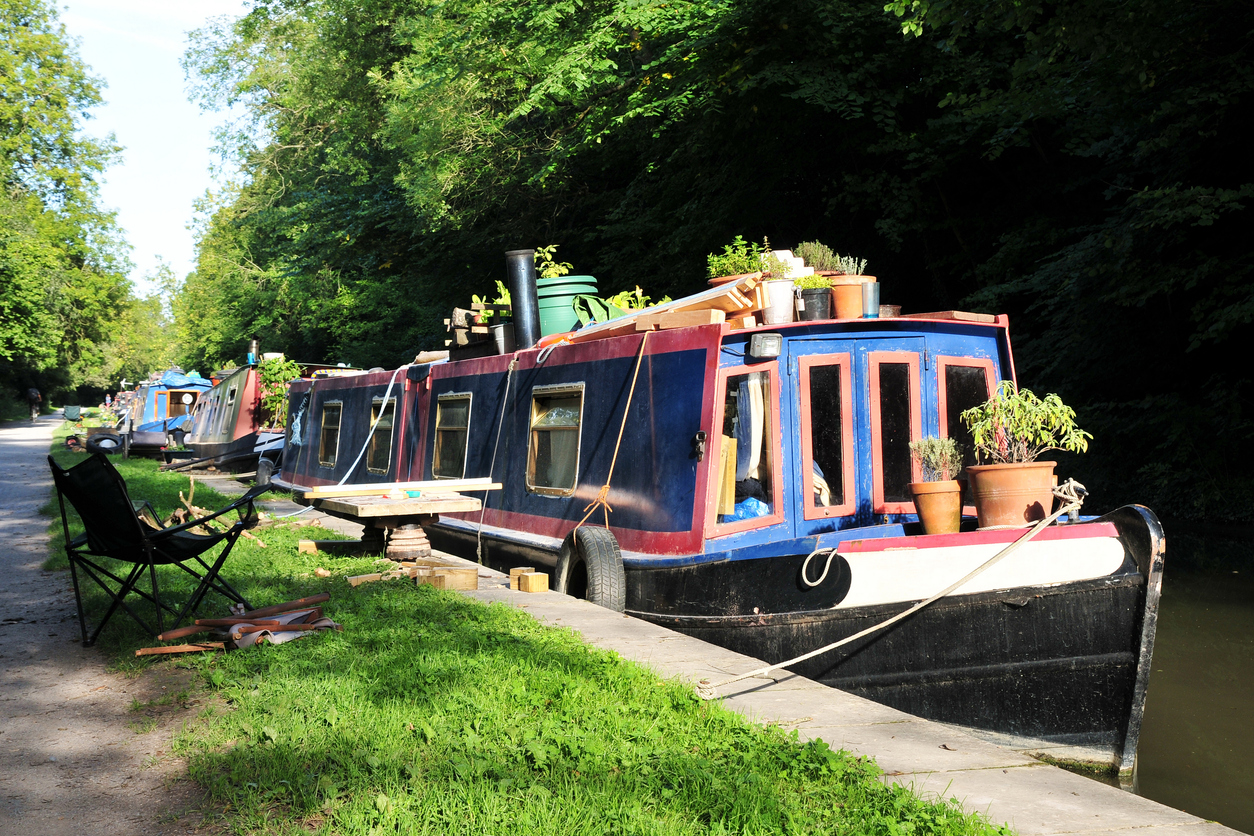Life afloat is rich and rewarding. Ask any one of the growing narrowboat-owning community. Whether you want to purchase a narrowboat for seasonal use or crave the year-round canal lifestyle, there are plenty of reasons to jump on board.
Narrowboat ownership isn't for the half-hearted, though. It's a commitment that requires specialist upkeep and a change in daily routine. Yet, for those committed to narrowboats, they wouldn't want it any other way. After all, there is no other way of getting this close to wildlife and nature every single day. Want to take the voyage yourself and nestle into a cozy floating cabin? Here we break down the costs, tips, and things to look for when living on a narrowboat in the UK.
 Living on a narrowboat brings a change in daily routine
Living on a narrowboat brings a change in daily routineLiving on a narrowboat UK: the pros and cons
Whether you're in it full-time or just a seasonal sailor, a narrowboat is attractive for many reasons. Before setting off on your canal adventure, we'll outline the common pros and cons of living on the water. As you'd expect, living on a narrowboat brings a complete shift in lifestyle. While this can be hectic, if not impossible, for those with working lives off the boat, it offers the freedom to cruise and explores. So, what are the pros?
- Freedom to visit new places
- Relaxing pace of life
- Minimalist living choice onboard with everything in one area
- Potentially money-saving
- Living close to nature
- Keeps you active and fit
While the above is appealing to many in search of a new lifestyle, canal living isn’t for everyone. The following cons should be weighed against your expectations and requirements:
- Less privacy than traditional dwelling, particularly for families
- Limited space and storage
- Storing, rationing or thinking about fuel
- Emptying the toilet and dealing with waste
- Having to schedule or look for moorings
- If cruising, you can’t be bogged down with work, school or other location commitments
How much does it cost to live on a narrowboat?
House prices are skyrocketing, rents are rising, and there's a rampant housing shortage in many of the UK's cities. Waterways may be appealing to you for that very reason. Just looking at the up-front costs, it's easy to see why. The average UK property cost was £256,000 in July 2021. For London, that figure is a whopping £656,000. A narrowboat costs just £57,000 on average, with new and cutting-edge boats costing up to £150,000. As long as you stay on top of renovation costs, it's no wonder owning a narrowboat is attractive. While there is no real tradition of narrowboat rentals, you can opt for boat sharing schemes to get a taste of the lifestyle before diving in.
The cost of living on a narrowboat does go beyond the expense of the initial purchase. One of the principal fees here is residential mooring. This varies depending on your boat's size and location, but you're looking at roughly between £3,000 to £18,000 per annum. You'll also have to budget for your regular Boat Safety Scheme (BSS) certificate every four years. This generally costs around £180. Marine insurance for third-party liability is also mandatory, with contents advised. You can expect to pay from £200 to £500 to insure your boat, again depending on size and condition. Lastly, heating and fuel are other costly aspects that depend on personal use. Some are more frugal than others, but you can expect to use between 1 to 1.5 liters of fuel per hour.
 Lifestyle influence for those that liveaboard
Lifestyle influence for those that liveaboardIs a narrowboat a good investment?
A narrowboat is a good investment that brings a noticeably positive lifestyle influence for those that liveaboard. Even leisure owners should treat their narrowboats more like a second home than as a vehicle. It is, after all, something to enjoy long in the future. Whatever your personal reasons or lifestyle, there is no denying that a narrowboat is a significant monetary investment. Its value largely exists in the ability to roam the UK's stunning canal system. There are over 2,000 miles of waterways across the UK, making narrowboats an investment for living, holiday-making, and more.
But do narrowboats keep their value? This all depends. Most canal boats hold their value exceptionally well over time, but they must be kept to a high standard and updated with the times. Common updates include indoor furnishings and hardwood flooring. When compared to cars, however, the potential to hold and increase value is very significant. Narrowboats hold out far longer and are commonly kept for upwards of 20+ years. While older narrowboats won't return the same as newer vessels, you'll still get a sizeable amount of money back when you sell. So, while there isn't an exact science to the investment potential of narrowboats, they bring years of happy use and a decent return at the end.
How to choose a narrowboat
Want to buy a canal boat? There are many reasons to go full-time on your barge, and these will affect the type of narrowboat you should buy. First things first, you should know where to look. You can buy narrowboats from a wealth of online and offline marketplaces. If you're looking for a new build boat, boat shows are a great way to check out designs and stock. Always inspect your boat before buying to check the general maintenance, hull, and engine conditions, and ensure that a reputable and qualified surveyor has surveyed your narrowboat purchase.
Before settling on the type of boat you want, think about how you'll use it. The needs of a hobbyist or seasonal canal user are going to be different from those living onboard all the time. Do you want to cruise all year-round or keep a permanent or semi-permanent base for your vessel? While size is a premium and adds to luxury, it hinders navigation along with short locks like Hebble Navigation.
In general terms, there are three styles of canal boat to choose from traditional, semi-traditional, and cruise. This is defined by the rear stern of the boat. A traditional stern has very little open space at the back and reserves indoor living areas. Semi-traditional sterns are designed with some walled spacing to the rear for standing and socializing. Cruise sterns are fully open and are great for recreational owners who spend more time above deck.
 Traditional narrowboat moored against the canal.
Traditional narrowboat moored against the canal.
Narrowboat mooring
Narrowboat mooring is an integral aspect of boat ownership that can either excite or irritate owners. Boats are allowed to moor alongside most canal towpaths in designated short-term spots. These generally allow users to stay in one spot for up to 2 weeks before moving on. Some rules are stricter with 48-hour limitations. While this may seem stringent, it's one of the only real ways to consider and regulate fellow canal users fairly.
There's always going to be a potential inconvenience to this aspect of cruising as more canal boats require mooring. Leisure boaters, in particular, often complain that short-term spots are taken up by liveaboard boaters in hotspot areas. What's more, you can't just shuffle about from one local spot to the next – there are minimum distances to prevent boat owners from simply staying in an area for free. This shouldn't be an issue for a genuine cruiser, but for those based in a specific area, residential moorings will be required.
Residential narrowboat moorings can be hard to come by as demand far exceeds supply. Some of these are operated on canal ways by the Canal & River Trust, while others are privately run on marinas and boatyards. Fees have to be paid for these services. It's worth noting that it's often easier to buy a boat that includes residential mooring from a seller. These come at a greater list price. If you know the area you'd like to remain moored in, contact local boat groups or talk to fellow owners for information on availability.
More information: Mooring guide: where to keep the boat
Living on a narrowboat: tips and tricks
Life on a narrowboat brings its own quirks and challenges. Here, we'll outline some narrowboat life hacks to make your day simpler. To begin with, always look to minimize energy costs and preserve fuel. LED bulbs, solar lights, and low-energy appliances are key to success in this arena. Likewise, you can preserve energy by keeping lead-acid batteries at over 50% to preserve their energy and effectiveness. It can get cold on a narrowboat, so ensuring lithium batteries are kept in warmer areas is key.
If you ask any narrowboat owner for first-time advice, many of the most practical answers involve storage and spares. Water containers are an excellent way to boost onboard water storage, and gas canisters always come in handy for those last-minute emergencies. When it comes to spares, engine oil, alternators, light bulbs, and antifreeze should all be kept in storage. At the end of the day, don't be afraid to ask neighbors for advice and input – soon, others will be asking you about the essentials of canal life in return.
A narrowboat is both a lifestyle choice and a passion project. Life on board isn't just about staying above water – it's about living responsibly on great British canals. So if you want to live out your dream on a narrowboat, be sure to plan it through carefully.
Happy mooring!


